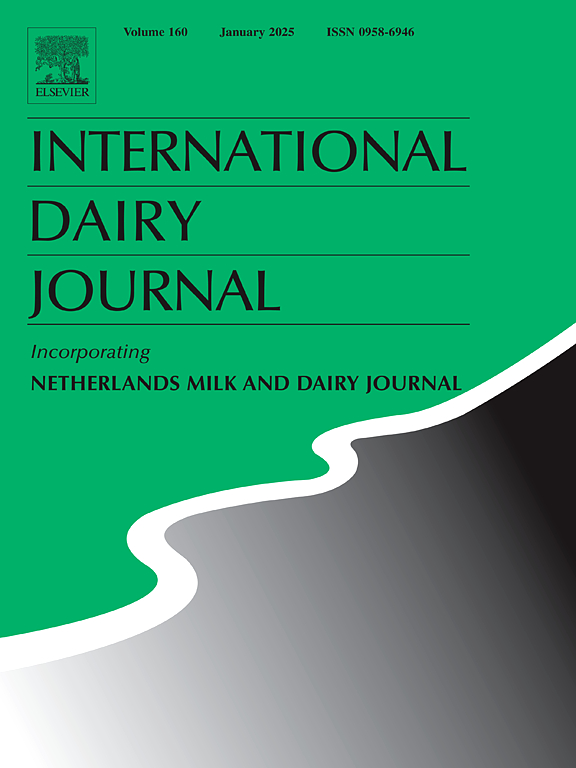Challenges and prospects of turning lactose into lactulose through electro-activation: A comprehensive and critical review
IF 3.4
3区 农林科学
Q2 FOOD SCIENCE & TECHNOLOGY
引用次数: 0
Abstract
Lactulose, a structural isomer of lactose, is a prebiotic disaccharide with significant pharmaceutical and nutritional benefits, is widely used in the food industry and healthcare as laxative, and in the preventing and treating portal-systemic encephalopathy. The conversion of lactose into lactulose is a sustainable approach to mitigating the environmental burden of whey while addressing lactose-related health concerns. Traditional methods of catalytic chemical and enzymatic isomerization have faced challenges such as low yields around 25 %, high costs, and environmental constraints; limiting their industrial feasibility or resulting in a costly product. In contrast, lactose isomerization by electro-activation (EA) has emerged as a promising and eco-friendly technology since lactose conversion yield >35 % is reported. The state-of-the-art of the EA lactose isomerization into lactulose and the interaction among the process parameters is thoroughly discussed in this review. However, despite its advantages, key challenges such as side products formation, colorization occurring during EA and relaxation time, as well as necessity of reaction yield enhancement have been addressed to highlight possible ways for EA process efficiency by combining EA with discolorizing techniques. Enhancing the process sustainability and energy efficiency through innovative technological advancements is crucial for improving the industrial use of EA in the process of lactose isomerization into lactulose. Moreover, the possibility of producing other valuable compounds, such as rare sugars and oligosaccharides, expands the industrial significance of EA lactose isomerization. The current review emphasized future research on optimizing process parameters and developing scalable strategies to improve yield, product color, cost-effectiveness, and industrial applicability, paving the way for a more sustainable and circular dairy industry.
通过电活化将乳糖转化为乳果糖的挑战和前景:全面和批判性的综述
乳果糖是乳糖的一种结构异构体,是一种具有显著药用和营养价值的益生元双糖,作为泻药广泛应用于食品工业和医疗保健,以及预防和治疗门脉-全身性脑病。将乳糖转化为乳果糖是一种可持续的方法,可以减轻乳清的环境负担,同时解决与乳糖相关的健康问题。传统的催化化学和酶异构化方法面临着诸如25%左右的低收率、高成本和环境限制等挑战;限制其工业可行性或导致昂贵的产品。相比之下,乳糖电活化异构化(EA)已经成为一种有前途的环保技术,因为乳糖转化率高达35%。本文综述了EA乳糖异构化成乳果糖的研究进展及各工艺参数之间的相互作用。然而,尽管其优点,关键的挑战,如副产物的形成,在EA和弛豫期间发生的着色,以及提高反应收率的必要性,已经解决了通过将EA与脱色技术相结合来提高EA工艺效率的可能途径。通过创新的技术进步来提高过程的可持续性和能源效率对于改善EA在乳糖异构化成乳果糖过程中的工业应用至关重要。此外,生产其他有价值的化合物的可能性,如稀有糖和低聚糖,扩大了EA乳糖异构化的工业意义。当前的综述强调了优化工艺参数和开发可扩展策略的未来研究,以提高产量,产品颜色,成本效益和工业适用性,为更加可持续和循环的乳制品行业铺平道路。
本文章由计算机程序翻译,如有差异,请以英文原文为准。
求助全文
约1分钟内获得全文
求助全文
来源期刊

International Dairy Journal
工程技术-食品科技
CiteScore
6.50
自引率
9.70%
发文量
200
审稿时长
49 days
期刊介绍:
The International Dairy Journal publishes significant advancements in dairy science and technology in the form of research articles and critical reviews that are of relevance to the broader international dairy community. Within this scope, research on the science and technology of milk and dairy products and the nutritional and health aspects of dairy foods are included; the journal pays particular attention to applied research and its interface with the dairy industry.
The journal''s coverage includes the following, where directly applicable to dairy science and technology:
• Chemistry and physico-chemical properties of milk constituents
• Microbiology, food safety, enzymology, biotechnology
• Processing and engineering
• Emulsion science, food structure, and texture
• Raw material quality and effect on relevant products
• Flavour and off-flavour development
• Technological functionality and applications of dairy ingredients
• Sensory and consumer sciences
• Nutrition and substantiation of human health implications of milk components or dairy products
International Dairy Journal does not publish papers related to milk production, animal health and other aspects of on-farm milk production unless there is a clear relationship to dairy technology, human health or final product quality.
 求助内容:
求助内容: 应助结果提醒方式:
应助结果提醒方式:


